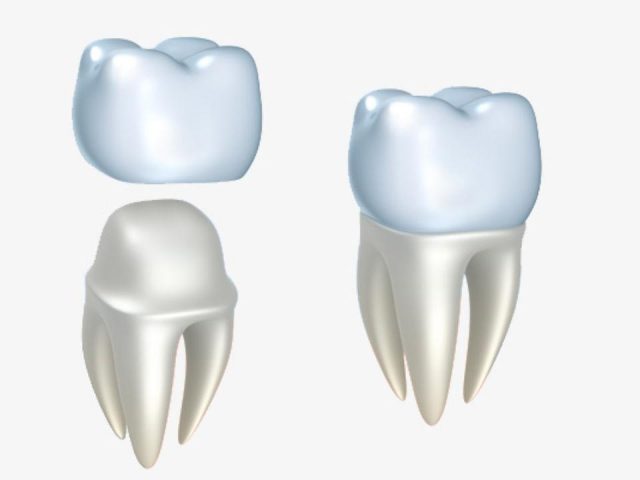Teeth Whitening

Dental Crown

What is a dental crown?
La crown is a cap that is placed over damaged teeth.
It is used to protect, cover and restore the shape of your teeth when fillings do not solve the problem. Dental crowns can be made of metal, porcelain, resin or ceramic. It generally requires no special care over time other than good, regular oral hygiene.
Why a dental crown?
- To cover and support a tooth with a large filling when there is not much healthy material left in place.
- To protect a tooth that has been weakened by decay, for example, against the risk of breakage.
- To restore an already broken tooth or a severely worn tooth.
- To cover a misshapen or severely discoloured tooth.
- To restore a tooth following root canal treatment.
- To serve as a pillar for a bridge.
- Covering a dental implant.
Types of dental crown:

Resin crowns:
All resin crowns are primarily used as a temporary measure, protecting the tooth until the permanent crown has been made. They are a metal-free alternative and can be mixed in several shades to match the natural colour of the teeth.
Metal ceramic crowns:
It has been in use for decades. They are made of black metal on the inside and white porcelain (ceramic) on the outside.
Indications:
- Dental Crowns
- Dental Bridges
- Dental Implants
The benefits:
- Aesthetics
- High mechanical performance
- Durable
- Affordable price
Disadvantage
- Sometimes the metal under the ceramic appears as a dark line at the junction between the crown and the tooth.
- Mutilating preparation
Ceramic crown
It has the particularity of not having metal on the inside, which is black in colour. Instead, the outer and inner parts are made of porcelain, a white material.
This is the most aesthetically pleasing type of crown, the only drawback being that it is more expensive than the other alternatives.
There are 3 main types of ceramic crown:
Traditional ceramics; called Feldspathic
Benefits
- Very aesthetic
- Requires minimal preparation
Disadvantages
- Does not mask external tooth discolouration as it is translucent
- Poor mechanical properties compared to other types of ceramics
Contraindications
- Fluorosis
- External tooth discolouration
Emax
Zircon
Benefits
- Very high mechanical properties
Disadvantages
- Poor aesthetic properties, as it is opaque
- Requires slightly more preparation than other ceramics
Indications
- Crown
- Veneer
- Implant
If we want to classify the different types of ceramic crowns according to the aesthetic properties:
Feldspathic>Emax>Zircon
And if we want to classify the different types of ceramic crown according to the mechanical properties:
Zircon>Emax>feldspathic
The steps involved in making a dental crown
- First visit: Examination and preparation of the tooth
- Second visit: Receiving the permanent dental crown, checking its fit and bonding
Note: If the tooth requires specific treatment (prophylaxis, dental caries treatment, root canal treatment, etc.), this will be carried out before the previous steps.
In conclusion
It is important to consult your dentist and carry out an examination to determine which type of crown is ideal for you from an aesthetic, functional and economic point of view.


